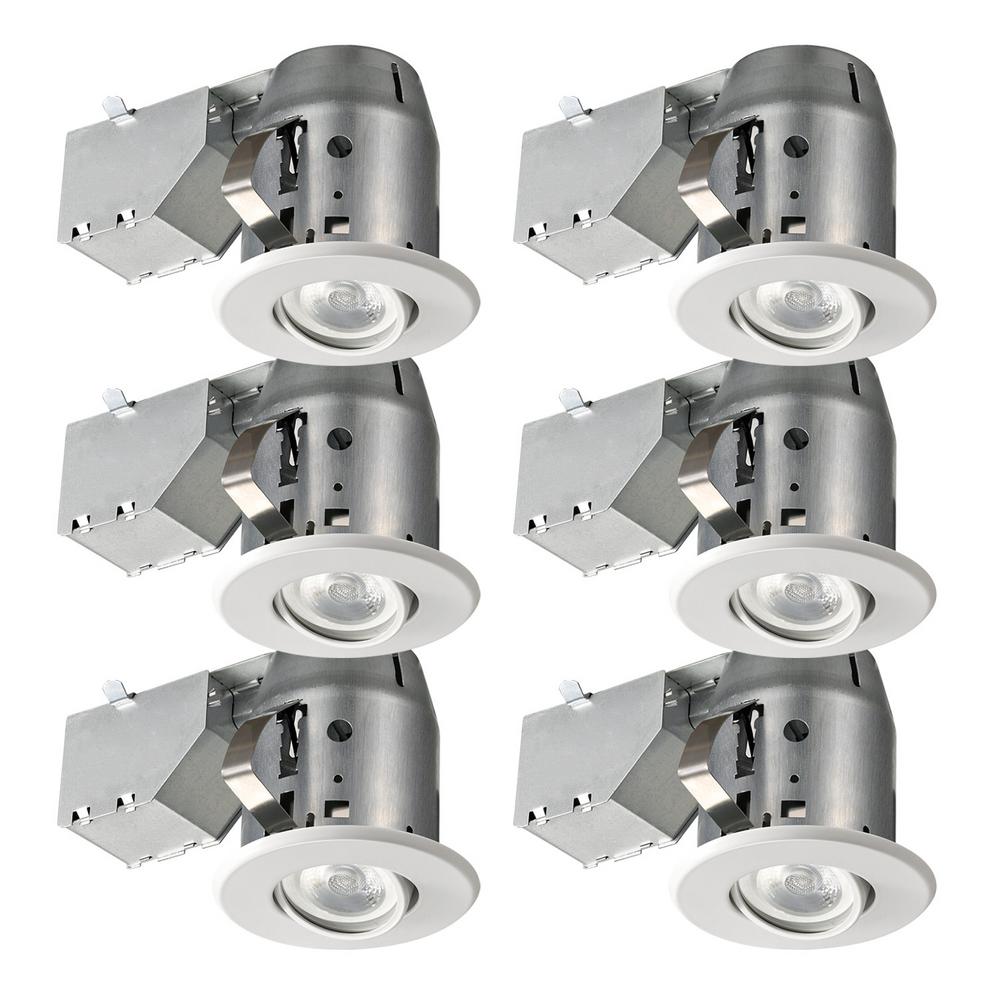Under-the-cabinet lighting can be plug-in or hard-wired. Plug-in units are the easiest to install. A hard-wired system is more attractive because there’s usually no exposed wiring and a dedicated wall switch controls the unit.
- How To Install Utilitech Recessed Lighting Model #0795299
- How To Install Utilitech Recessed Lighting Trim
To install plug-in units, simply attach the fixture to the underside of the upper cabinet and plug the unit into a nearby outlet. You turn the units on and off with the switch that’s built into the fixture. Plug-in units are a good choice if you only have a small area to illuminate.
The reason for this is that, depending on the bulbs used, recessed lighting can generate a lot of heat, which could pose a fire risk if the heat source is located close to flammable insulation. Recessed Lighting Bulb Choices. What type of bulbs your recessed lighting will use is an important factor to consider when choosing what units to install.
The easiest way to get power for the hard-wired under cabinet system is to tap into the power in a nearby receptacle. This involves running a new cable to a new switch box that you need to install and then pulling cable from the switch to where each fixture will be located.
Figuring out where to run the cables to the fixtures can be tricky. You want to disturb the walls and backsplash as little as possible. If the backsplash is removable, remove it and cut a channel in the wallboard just above the back of the countertop. You also need to drill holes in the wall studs so that you can pull the cable. If you can’t remove the backsplash, you still need to access the studs and drill holes for the cable. This means cutting into the walls, so add time for patching and drying.
Try to keep the cutting (for getting the cable out of the wall and to the fixtures) to a minimum. If possible, try to get the cable high enough that it could come out of the wall inside the cabinet rather than out of the wall directly below the cabinet. If your cable does have to come out beneath the cabinet, make the hole as tight as possible to the cabinet so that the fixture will cover it. Make sure you have about 16 to 18 inches of cable coming out of each opening so that you have enough extra cable to make connections. Strip off enough of the cable sheathing so that the individual wires are exposed about 8 inches.

How To Install Utilitech Recessed Lighting Model #0795299
- The Lithonia Lighting LF6N 6 in. Recessed Horizontal The Lithonia Lighting LF6N 6 in. Recessed Horizontal Compact Fluorescent Downlight is ideal for a wide variety of low- to medium-height ceiling applications including commercial retail and hospitality spaces. The aluminum full reflectors are optically designed to maximize Lumens output and to provide superior glare control.
- Utilitech pro bronze integrated remodel recessed light kit utilitech pro white integrated led remodel and new construction utilitech pro 2 pack 65 watt equivalent.
You also need to cut a hole for the switch. Use a remodeler’s box for this switch. These types of boxes have spring flanges, side clamps, or foldout ears that secure the box when you can’t nail it to a wall stud. All three types are available at most home centers. After the box is installed, pull the cable for the switch, leaving 16 to 18 inches extra.
How To Install Utilitech Recessed Lighting Trim
After you run the cable, you should start putting the lights in place. Follow the manufacturer’s instructions and disassemble each fixture necessary for the installation. Pull the cable through the knockout holes in the fixture body and secure the cable with a cable clamp. Make sure that the sheathing is in the clamp and not the individual wires. Most hard-wired fixtures supply the cable clamps. If you don’t have any, you can find them in any electrical department of a home center store. Next, position the fixture under the cabinet and screw it in place.
Connect the wires from the fixtures to the individual wires from the cable. Again, connect like colors to each other. Position the wires so that they lay flat in the base, being careful not to pinch them when you reattach the base to the main housing. Follow the manufacturer’s instructions and finish assembling the fixture.

You’re almost there! Now that the individual fixtures are connected, it’s time to wrap things up by connecting the wires to the switch and then testing your beautiful new lights. Here’s how:
Begin by splicing the white wires together from both cables.
Remember there are two cables to the fixture: One that brings the power to the switch and the other that sends the power to the fixtures.
Next, attach the black wires from each cable to the terminals on a single-pole switch.
Connect the ground wire to the switch’s ground screw (it will be green) and to the box if it’s metal.
It’s important to note that you’ve done nothing yet with the box or cable that supplies the power. Before you take the next step, turn off the power to the box that you’ll be tapping into.
Now, splice the white wires together and the black wires together using the new cable and the existing power-supply cable. If you see a colored wire in the box, connect it to the black wires.
Use wire connectors on all connections.
Restore power and test the system.